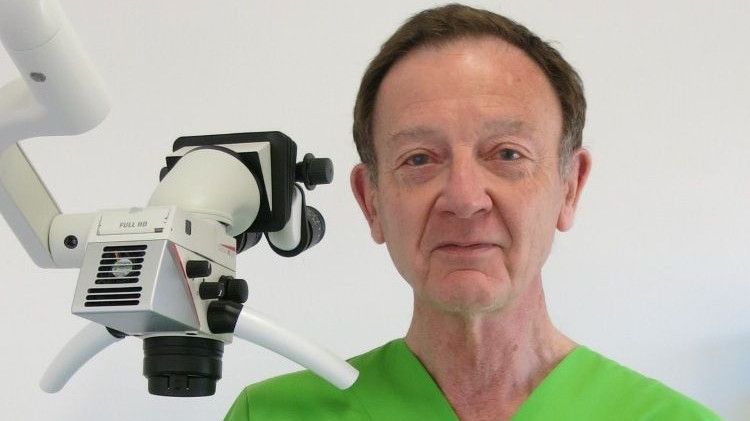Most people, even when they’re well past adolescence, get the occasional spot. It often comes – Sod’s law – right before an important event where you want to look your best. But is it normal to get more noticeable breakouts long into adulthood?
“Adult acne is incredibly common,” says consultant dermatologist Dr Derrick Phillips.
“The good news is many cases of acne respond well to over-the-counter products.”
It’s important not to underestimate the impact skin problems can have on mental health.
“It can be emotionally distressing, especially for adults who may feel like they should have outgrown the condition,” says Dr Omar Tillo, plastic surgeon.
Here, skin experts run down everything you need to know about coping with adult acne…
How does adult acne differ from teenage acne?
“Teenage acne occurs in males and females during puberty,” explains Phillips, who says it is “driven by the hormonal changes that lead to development of adult physical characteristics”, and affects men and women roughly equally.
“Most people will ‘grow out of it’ and in many cases it can be managed with skincare alone.
“The skin is generally greasy and acne lesions (pimples, whiteheads, blackheads and nodules) are found on the forehead, cheeks, chest and back.”
Adult acne, on the other hand, is more common in women, and the location of blemishes tends to be different.
“Teenage acne often appears on the forehead, nose, and chin, while adult acne is more likely to occur on the lower part of the face, including the jawline, cheeks, and neck,” Tillo explains.
Phillips adds that breakouts can be “a continuation of teenage acne, however, in some people it will be their first experience of acne”.
What are some of the most common causes?
Hormones are often the culprit when it comes to women’s skin issues.
“In adult female acne, the oil-producing sebaceous glands become sensitive to normal circulating levels of androgen hormones, leading to increased oil production and acne breakouts,” Phillips says.
“Oestrogen plays an important role as it suppresses androgen levels, reduces oil production and has anti-acne effects. The fall in oestrogen at the end of the cycle is responsible for the pre-menstrual breakout.”
A number of other lifestyle and diet factors could be to blame.
“Stress, which can trigger the production of hormones that can cause acne,” says Tillo.
“[As well as] certain diet and foods, such as those high in refined carbohydrates or dairy products, and some medications including corticosteroids, androgens, and lithium.”
Make-up can also trigger a breakout, Phillips says: “Particularly when worn for prolonged periods or left on overnight. Make-up traps dirt and environmental pollutants on the skin. It can also clog the pores.”

How should you treat mild adult acne at home?
Skincare should be the first step if you want to get rid of a few pesky zits.
“The wrong skincare can aggravate acne-prone skin,” says Phillips. “In general, avoid oil-based products and occlusive ingredients such as silicone.”
Tillo recommends following a three-step routine at night: cleanser, treatment and moisturiser, adding sunscreen in the morning.
“Wash your face twice a day with a gentle cleanser to remove excess oil and impurities,” he says. “Avoid using hot water, harsh scrubs or rough washcloths, as they can irritate the skin.”
Next, apply an acne treatment containing salicylic acid or benzoyl peroxide: “These ingredients can help to unclog pores, reduce inflammation, and kill bacteria that cause acne. Start with a low concentration to avoid irritation and gradually increase it as needed,” advises Tillo.
Finish with an oil-free moisturiser that’s non-comedogenic, meaning it’s formulated with ingredients that won’t clog your pores.
And make sure your skin is protected all year round, Tillo continues: “Sun exposure can worsen acne, so use a non-comedogenic sunscreen with an SPF of at least 30 if you will be spending time outside.”

When should you seek help for more severe acne?
“You should seek help for severe acne that is causing scarring or significant changes in your skin texture,” says Tillo.
For instance, if it’s “widespread, covering a large area of your face, chest, or back, or if you’re experiencing a lot of pain, discomfort, or itching due to your acne”.
Phillips advises: “You should consult your GP if you have deep tender cysts and large red nodules. This type of acne is prone to scarring and requires medical treatment.”
You should also talk to your doctor if you’ve tried over-the-counter products and they’re not working after a few weeks or, Tillo says, “If it’s causing emotional distress, such as feelings of low self-esteem, anxiety, or depression.”
Your GP may prescribe you medicated products or refer you to a dermatologist.
“There are several medical interventions that a dermatologist may recommend for treating severe acne,” Tillo adds.
“The appropriate treatment depends on the individual’s specific case, so it’s important to consult a dermatologist to determine the best course of action.”















